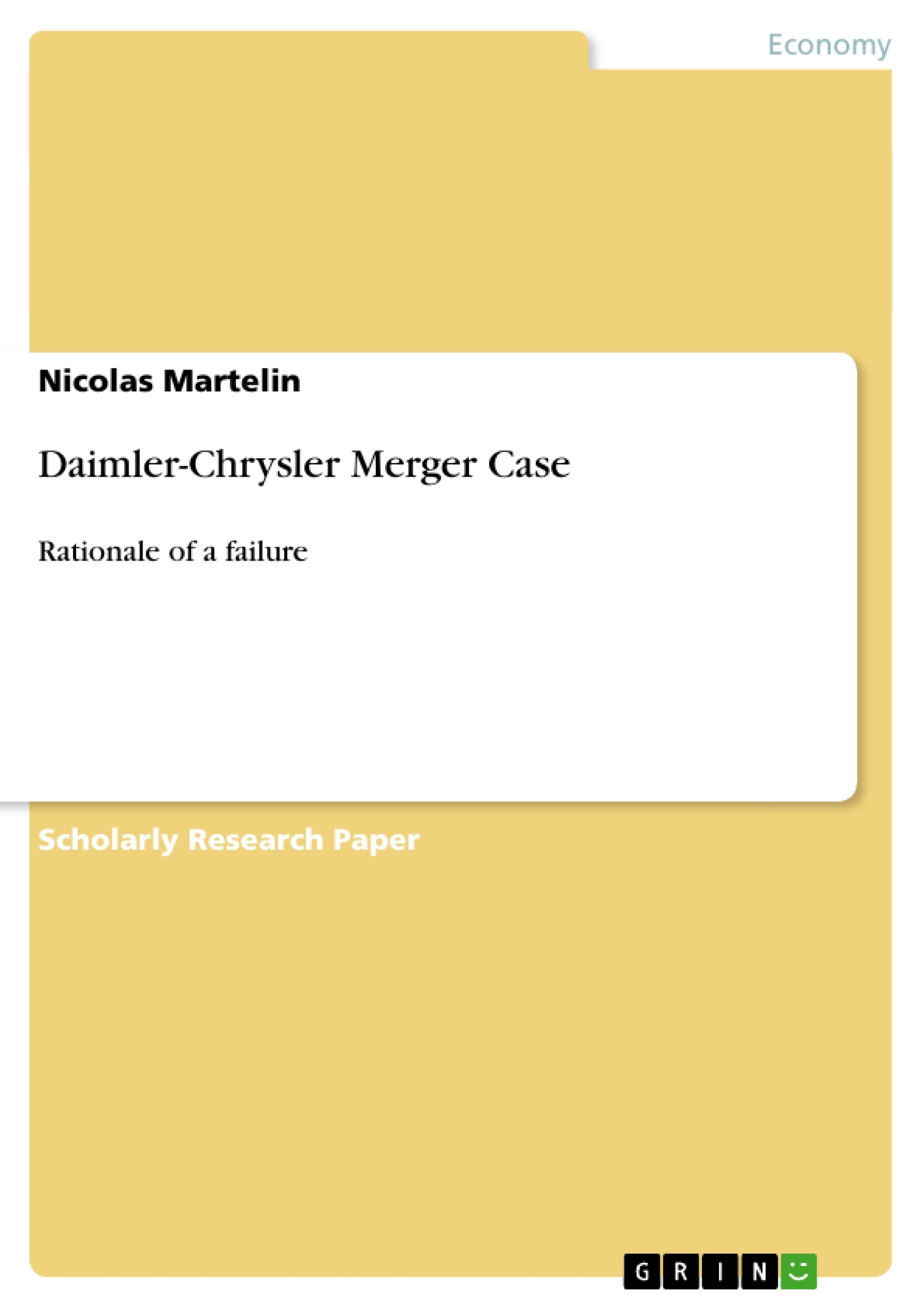Back in 1998, Daimler-Benz, the German manufacturer of luxury automobiles, had only captured less than one percent of the American market (Daimler-Benz AG, Standard & Poor’s Stock Reports. New York: Standard & Poor’s, Inc., July 21, 1997). Meanwhile, the American Chrysler Corporation was willing to extend its international reach, especially in Europe.
Given the circumstances, both companies came to the conclusion that a merger would make sense.
On May 7th, 1998, the merger was officially announced as the largest trans-Atlantic merger ever.
However, this buyout - which could have led to the creation of the greatest car manufacturer in the world - had failed in less that ten years. On May 14, 2007, the DaimlerChrysler company was already a thing of the past. Almost two years after the sale of Chrysler, a question remains:
Why the merger failed? If we compare a merger to a marriage, we would say that they married the wrong persons. But how managers and executives from the two companies has gotten it so wrong?
Table of Contents
- Introduction
- The Rational for a Merger, the Failure
- Pre-Merger Situation: Daimler
- Pre-Merger Situation: Chrysler
- The Meeting of Minds
- A Spectacular Failure
- Analysis
- The Rationale for the Failure, Issues Related to Cultural Differences
- Cultural Issues Introduction
- Cultural Aspects of the Corporate Structure
- Cultural Aspects of the Leadership Style
- Cultural Aspects of the Company Values
- Conclusion & Recommendations
- Conclusion of the Case Study, Recommended Course of Action
- Conclusion
- Recommendations
- References
Objectives and Key Themes
This case study aims to analyze the DaimlerChrysler merger, examining the reasons behind its failure despite initial hopes for a successful creation of the world's largest car manufacturer. It delves into the cultural differences that played a pivotal role in this spectacular failure.- Cultural Differences in Corporate Structures
- Cultural Impact on Leadership Styles
- The Influence of Company Values on Mergers
- The Impact of Cultural Differences on the Success of a Merger
Chapter Summaries
The "Introduction" section sets the scene, outlining the merger's rationale and the pre-merger situation of both Daimler and Chrysler. It emphasizes the contrasting goals and market positions of the two companies. The section also highlights the initial hope for a successful merger, eventually leading to the creation of the world's largest car manufacturer. The "Meeting of Minds" section delves into the initial optimism surrounding the merger, highlighting the positive aspects and perceived benefits that drove the decision. It explores the initial understanding and expectations both Daimler and Chrysler had regarding the merger's potential. The "A Spectacular Failure" section analyzes the reasons behind the eventual failure of the merger. It delves into the underlying issues that contributed to the decline of the merged entity, highlighting the unexpected obstacles that emerged after the initial enthusiasm. The "Analysis" section focuses on the cultural differences that played a significant role in the merger's failure. It examines the impact of varying corporate structures, leadership styles, and company values on the integration process. The section emphasizes the critical role of cultural compatibility in mergers and acquisitions.Keywords
This case study focuses on the DaimlerChrysler merger, examining the impact of cultural differences on its failure. Key topics include: intercultural management, corporate culture, leadership style, company values, mergers and acquisitions, and cross-cultural communication. The case study explores the complexities of integrating two companies with distinct cultural backgrounds and provides valuable insights into the challenges of managing a transatlantic merger.- Quote paper
- Nicolas Martelin (Author), 2008, Daimler-Chrysler Merger Case, Munich, GRIN Verlag, https://www.grin.com/document/132855




